- What John Lennon Thinks of Donald Trump - November 14, 2016
- The Meaning of Fun: The Paul is Dead Rumor - February 3, 2016
- BEATLES-STREEP-SHEA SHOCKER: IT’S NOT HER!!!! - August 13, 2015
By Grant Maxwell, Guest Dullblogger
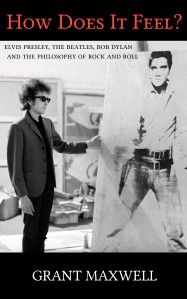 Grant Maxwell has served as a professor of English at Baruch College in New York. He holds a Ph.D. from the City University of New York’s Graduate Center, and he’s an editor at Archai: The Journal of Archetypal Cosmology. He’s also a musician, having played on stages with members of The Rolling Thunder Revue, The Black Keys, and The Strokes. He lives in East Nashville, Tennessee, with his wife and son. The following is a modified excerpt from How Does It Feel?: Elvis Presley, The Beatles, Bob Dylan, and the Philosophy of Rock and Roll, issued March 10 from Persistent Press.
Grant Maxwell has served as a professor of English at Baruch College in New York. He holds a Ph.D. from the City University of New York’s Graduate Center, and he’s an editor at Archai: The Journal of Archetypal Cosmology. He’s also a musician, having played on stages with members of The Rolling Thunder Revue, The Black Keys, and The Strokes. He lives in East Nashville, Tennessee, with his wife and son. The following is a modified excerpt from How Does It Feel?: Elvis Presley, The Beatles, Bob Dylan, and the Philosophy of Rock and Roll, issued March 10 from Persistent Press.
Visit Amazon to view excerpts, read reviews, and download the book. See Rock and Roll Philosopher for photos and author bio.
It is an intrinsically problematic task in the world that the Beatles so fundamentally inform to see that, when the Beatles entered Abbey Road Studios for their first session with George Martin, the situation resembled nothing so much as an instance of wild, unsophisticated primitives stepping into engagement with the cultivated technological sophistication of modernity. According to John Lennon: “When we came down we were treated like provincials by the cockneys . . . looked down upon as animals. We were hicksville.”1 This narrative is familiar to Beatles enthusiasts, but its occluded import, the sense that this moment was the locus for a cultural bifurcation, a split that could have gone either way, is difficult to see without the rosy knowledge of what eventually occurred coloring one’s perception of the event. Things are one way, and then, with relative suddenness, they are another, and no one can know where and when these moments of discontinuous transformation, the fundamental reorganization of the system’s rules, will take place. However, after the fact, it generally appears that it could not have gone any other way. The situation in question, stripped of its mythical import, could be described as nothing more than a little dance band entering into a recording studio for a session, but this encounter is one of those rare moments on which the direction of history depends, allowing the Beatles to become a symbolic focus for the larger transformations of their decade.
The radical quality of the continual “revolution in the head”2 that the Beatles underwent from the beginning of the sixties until their break-up at the end of the sixties is perfectly encapsulated in Lennon’s joke at the close of their last impromptu concert on the roof of Apple Corps in 1969: “I’d like to say ‘thank you’ on behalf of the group and ourselves, and I hope we passed the audition.” The actual “audition” a few miles away at Abbey Road Studios less than a decade before the rooftop concert is a defining motif of the Beatles’ career: from this moment on, tested again and again, they always managed to pass into wider and higher realms of culture until they had reached “the toppermost of the poppermost,” and there were no more auditions left to pass, a situation that provided the context for the perfect summation of Lennon’s ironic statement. On one hand, it appears the height of absurdity for the most famous and successful band of all time to express the sentiment that Lennon voiced. However, in the context of the actual lived experience of the Beatles, they were still essentially the same young men who had optimistically set out for their session less than seven years before in the summer of 1962. Indeed, one of the most appealing things about the Beatles is that they never seem to have lost their sense of humble aspiration, even when Lennon was claiming that the group was “bigger than Jesus.”3
The Abbey Road building into which the Beatles entered on what can only be referred to as that fateful day, June 6, 1962, while “boxy” and “unpretentious,” had been the site for the development of some of the most important technological innovations in recording, including “the fundamentals of stereo,” “moving-coil microphones,” and “large-valve tape recorders.”4 The Beatles were, thus far, almost exclusively a live band, focusing on generating frenzied excitement in audiences. Abbey Road, however, represented a rather different venue of transmission. The Beatles stepping into the studio were an effective embodiment of intuitive modes literally entering into commerce with the rational, scientific epistemology productive of recording technology.
In addition to recording innovations, EMI, the parent company of Parlophone, had been one of the primary developers of television and radar, though this period of radical innovation was over by the 1950s, and the company had retreated into a relatively static orthodoxy, with Abbey Road Studios as one of the primary exemplars of this technological complacency. Like the cliché primitives entering into a center of cultural power, the Beatles were initially intimidated by the sheer magnitude of the facilities. Abbey Road, generally described as something between a scientific laboratory and a library, was starkly different from the dank, underground clubs to which the Beatles had become accustomed, the architectural and aesthetic qualities of a building profoundly informing the affective tone of the activities that occur inside.5
The ambiance of Abbey Road was reflective of a rational approach to making records based on fixed schedules and technical procedures. According to engineer Alan Brown, the studio practiced a “very strong engineering discipline,” explaining that “we all wore white lab coats when we worked.”6 This description sounds more like a science lab than a place for recording rock and roll. The clean, rather utilitarian rooms of Abbey Road, filled with the latest in recording technology, would have, like a film set, created a certain tone, visible in the activity of technicians carefully turning knobs and flipping switches under white ceilings. This setting speaks volumes about the mentality that went into its construction, which prizes efficiency and rational structure over aesthetic concerns, and which profoundly affects the felt experience of activity, and thus the concrete products that result from that activity.
The interior of the building was blank, an orderly and brightly lit container for precise technological accomplishment. In contrast, the Cavern Club in Liverpool, the venue most associated with the Beatles’ early career, had the quality of a decrepit Victorian cellar, having previously served as a produce warehouse, with narrow stairs leading down to a dimly lit room with rounded ceilings of rough-hewn stone curving steadily into walls of the same coarse material, dripping with condensation from the bodies packed within. Where Abbey Road was a neat, spacious building conducive to technical problem solving, the Cavern was a place more conducive to losing oneself in the hot, fecund press of bodies and the pounding rhythms echoing through the tight, womblike hall.7
This difference was only amplified by the respective environs of the buildings, the affluent St. Johns Wood area of London in which Abbey Road was situated contrasting sharply with the Matthew Street location of the Cavern Club in Liverpool, which had been the site of a produce market dotted with pubs, a decidedly more working-class locale. Thus, the distinction between these two primary loci of the Beatles’ public identity could not be more stark: the site for the distribution of the produce of provincial physical labor and its accompanying after-hours ambiance of alcohol consumption juxtaposed against the posh centrality of a studio generally dedicated to technological development and the recording of high cultural classical music and verbal comedic wit.
The Beatles’ seven-year inhabitation of Abbey Road produced a deconstruction of this opposition, both in concrete practical ways, and more broadly in the public imagination, culminating in the iconic photo of the long-haired, bearded, and barefoot (in McCartney’s case) Beatles crossing the road on the cover of their last recorded album, named for the studio in which they produced the bulk of their music. Where there was tension in their first encounter, Abbey Road ultimately became synonymous with its provincial invaders through a sustained engagement of polarized relational modes. Although the Beatles would come to represent the return of repressed premodern epistemologies into the predominant technological culture of commercial media, they were only able to perform this return by deeply integrating the rapidly advancing technologies into their music, from double-tracked vocals and sped-up piano solos to backwards guitars and tape-loops.8
The Beatles were rebellious agents of change producing transformation through their prolonged involvement with this place that so strongly epitomized the rationalization of culture, down to the music that the culture produced, which is perhaps the most accurate metric that one can hope to find for the state of a culture’s soul. The Beatles, who had spent most of the last few years riling up drunken crowds of sailors, strippers, art students, and wage-workers, inhabited a different mode of relating to experience than the clean, precise quality of the studio. As with the tension between Lennon and McCartney, this broader tension of opposites produced the friction necessary to generate profound novelty. Although the band’s unorthodox attitude certainly made waves, so to speak, the friction between the Beatles and Abbey Road, fractally echoing the friction between Lennon and McCartney, generated an energetically charged atmosphere as the group arrived for their session, a potent force that would play a large role in impelling a fundamental shift in Western culture.9
- Mark Lewisohn, Tune In: The Beatles: All These Years, New York: Crown Archetype, 2013, 756. Despite the Beatles’ recent immersion in the more somatic mode characteristic of both rock and roll and the Reeperbahn, the rational mode had been inculcated into them from a young age as an intrinsic part of English education. Although the Beatles’ experiences in English schools had prepared them for their encounter with Abbey Road to a far greater extent than the analogy to the meeting of primitive tribe and advanced technological civilization suggests, there does seem to have been something of this quality endemic to the situation, as apparent in descriptions of the Beatles’ first encounter with Abbey Road is an evocation not only of regional prejudice, but of class distinctions between the basically working class attitude of the Beatles (belied somewhat by particularly Lennon’s middle-class background) and the relatively high cultural environment of Abbey Road. The encounter between the Beatles and Abbey Road seems to have exemplified the friction, and eventual integration, of working-class and middle-class modes of relation. (Tune In 664, Gould 46, and Ian MacDonald, Revolution in the Head, Chicago, IL: Chicago Review Press, 2007, 25.) ↩
- The title of Ian MacDonald’s book. ↩
- The Beatles Anthology,Dir. Geoff Wonfor and Bob Smeaton, Apple Corps, 2003. ↩
- Bob Spitz, The Beatles: The Biography. New York: Back Bay Books, 2005, 316. ↩
- Jonathan Gould, Can’t Buy Me Love: The Beatles, Britain, and America, New York: Harmony Books, 2007, 121. ↩
- Spitz 350. ↩
- Gould 109 and Spitz 59. ↩
- Steve Turner, The Gospel According to the Beatles, Louisville, KY: Westminster John Knox Press, 2006, 10, Tim Riley, Tell Me Why: The Beatles: album by album, song by song, the sixties and after, Cambridge, MA: Da Capo, 2002, 26 and Gould 14. ↩
- Spitz 316, 350. ↩

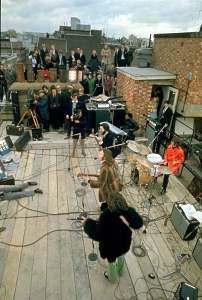
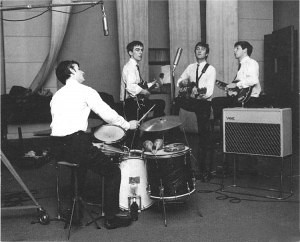
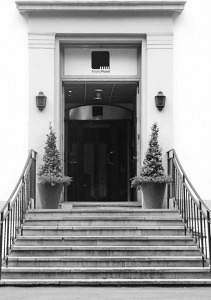
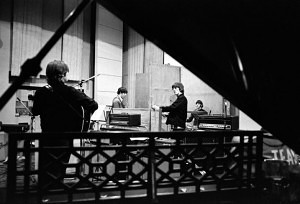
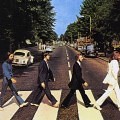
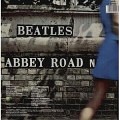
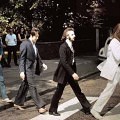

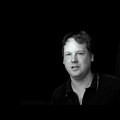


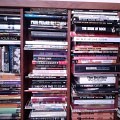
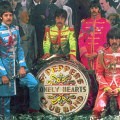
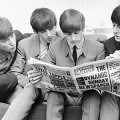
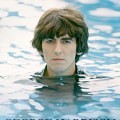
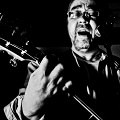
Good Lord, I am an academic and this excerpt reminds me why I hate reading academic writing! I prefer to read the work of literary craftspeople like Devin, Nancy, Michael, and Mark Lewisohn, who write not to impress other Ph.D.s, but real people.
An highly enjoyable piece of writing.
Oh please, Rob. That was a load of bollocks and you know it.
Thank you, Rob. I appreciate you saying that.
The very name of the studios was an announcement of ambition, a declaration of intent. Just as the medieval monks worked and sang in the ‘Abbey’, so did these latterday visionaries, these conduits from the peasantry to the heavens, ring out their own hymns to the modern. The addition of the ‘Road’, foreshadowing the long and winding one that would lead them far from here, was a presentiment of future travels, a prophecy of world conquest. etc etc, ad nauseum.
Hi Dan, that’s an interesting analysis of the synchronistic significance of Abbey Road’s name that I hadn’t considered. I love the phrase “ring out their own hymns to the modern,” by the way.
Hey Doc, can you explain exactly how Studio 2 “strongly epitomized the rationalization of culture, down to the music that the culture produced, which is perhaps the most accurate metric that one can hope to find for the state of a culture’s soul”? What does the “rationalization of culture” mean anyway? And what exactly is the “state of a culture’s soul”? I have to commend you, you sure like your jargon and your purple prose.
Harriman, “the rationalization of culture” is derived from Max Weber’s foundational sociological text, “The Protestant Ethic and the ‘Spirit’ of Capitalism.” I highly recommend it as a possible point of entry into some of the types of questions you’re asking. Regarding ” the state of a culture’s soul,” I’m surprised you describe that phrase as “jargon,” but if you read the rest of the book, you’ll see that, following thinkers like Hegel, Jung, James, and Whitehead, I take the perspective that cultures can be viewed as emergent entities, fractally reiterating the qualities ascribable to individuals. In response to the more general thrust of your questions, though, I’d say that this is a philosophical book about music, so you probably won’t like the book unless you like philosophy, which can certainly be difficult, but which is also extremely rewarding for those of us who persist in its study.
I could be wrong, but I think Studio 2 rationalized the culture (the Beatles’ “beat music” as Brian called it) by donning white lab coats, setting up microphones and scientifically calibrated tape machines, recording JPG&R, and pressing records for mass distribution, rather than ignoring the music and leaving it in the sweaty cavern club for only hardcore locals to enjoy.
I agree, Sam. I see the Beatles as having produced a kind of hieros gamos, or sacred marriage, of rational and intuitive modes of relation through their engagement with Abbey Road.
“Although the Beatles would come to represent the return of repressed premodern epistemologies into the predominant technological culture of commercial media, they were only able to perform this return by deeply integrating the rapidly advancing technologies into their music, from double-tracked vocals and sped-up piano solos to backwards guitars and tape-loops.”
Hey Doc, can you explain exactly what returned repressed premodern epistemologies the Beatles came to represent? I’m legitimately curious.
Harriman, you’ll have to read the book if you want to find out which repressed epistemologies I suggest were exemplified by the Beatles. You can download the book for free from Amazon until midnight tonight, or there are more excerpts at http://www.rockandrollphilosopher.com. I’d be interested to hear a more cogent critique than the one you’ve offered here.
I found this very interesting, Grant. I think it’s important for us, at this late date, to remember what the EMI studios were like in the early 1960s, and how they must have felt to the Beatles.
As for Lennon’s “I hope we passed the audition,” I do question whether “in the context of the actual lived experience of the Beatles, they were still essentially the same young men who had optimistically set out for their session less than seven years before in the summer of 1962.” At a minimum, the Beatles of 1962 were unified in a way the Beatles playing on the rooftop of Apple transparently weren’t. And Lennon’s joke is a joke not only because it’s absurd to think of the Beatles auditioning after the level of success they’ve had, but because this performance was the opposite of an audition — it was a swan song. I hear Lennon’s bitterness about show business in this jibe, but maybe I’m reading too much into it.
It also seems ironic that when the Beatles succeeded in breaking free of the studio’s constraints, and were recording how they wanted where they wanted, things fell apart. The “Let It Be” sessions were so troubled at least in part because there was a lack of external structure and expectations. And “Abbey Road” worked in large part because those external constraints were present.
Thank you, Nancy. You bring up some interesting points here. I agree with you that by the time of the “rooftop concert,” the Beatles had gone through experiences that must have transformed them in profound ways. My point in this passage is that they were still very young men in their twenties and that, while they certainly changed and matured along with the culture over the course of the sixties, they remained at the beginning of their adulthoods. I see the rooftop concert as a kind of dialectical return to their roots after not having performed live for a few years. Although the performance took place in a hugely altered context, my reading is that they seem to have been nervous to return to live performance, which is an affective tone similar to their first session at Abbey Road. I don’t think Lennon’s joke is any more bitter than jokes he made in the band’s earlier years–Lennon always seems to have demonstrated a characteristic mixture of optimistic idealism and harsh cynicism. And as so often seems to be the case with the Beatles, and particularly Lennon, I think his joke is both ironic, as I suggest here, and doubly ironic, as I suggest elsewhere in the book, as Lennon seem to have been honestly anxious about the quality of the band’s final performance, deflecting his admitted insecurity with blustery humor as he so often did. To my mind, the Beatles’ entire career has the quality of a breathless, exhilarating audition, mediating the first widespread public emergence of a radically novel way of relating to experience, submitting itself to the scrutiny of a more constrained mode of thought that had previously been predominant. I agree with you, though, that the Apollonian structure of Abbey Road, including George Martin’ deft judgment, lifted the Beatles from being simply a very successful local band to being the world historic icons that we know and love. It may be that this particular excerpt presents Abbey Road in a somewhat negative light, but in the larger context of the section from which it is taken, Abbey Road is presented as a vitally important element in the Beatles’ process of becoming. I emphasize the rationalized quality of Abbey Road not to privilege intuitive epistemologies, but to suggest that the Beatles enacted a synthesis of intuition and intellect, exemplified in the opposition of their primal Hamburg initiation with their critical Abbey Road initiation.
Grant, I’m glad we’re getting some good substantive discussion here, because your excerpt touches on something essential to the story, and foundational to how it was to be a Beatle and how it felt to create what they did. Before addressing the topic in your and Nancy’s comments, I wanted to wonder aloud if the very remoteness of the technology in 1962–the large size of the gap between the Apollonian and the Dionysian–was what give the synthesis its power? I wonder if the ubiquitousness of art-making technology in the decades since, and the great strides made in having it accessible (and comprehensible) without much technical background, has actually lessened the quality of what has been produced with it? I can’t believe I’ve never read this, but within five years of desktop publishing tech theoretically opening print to all, print was well on its way to becoming marginal to the mainstream. The rise of art-producing technology has certainly produced better technology, but it hasn’t, IMHO, produced better art. More, a cacophony of half-digested ideas thrown at an increasingly impassive audience, turned off by too many half-digested ideas.
Now that I’ve gotten THAT off my chest :-)…
One of the most impressive things about the Beatles is how they never took their foot off the gas pedal–as if they WERE auditioning, long after they weren’t–with the sole exception to that being, IMHO, the Let It Be session. I think this was intentional, at least on Lennon’s part (his “trousers off” comment); but I think you’re right that the joke was an acknowledgment of, and preemptive defense of, easing off by someone who’s been busting ass with an audition-level of intensity for the previous seven years.
Another point that occurred to me is how the concept of adulthood has changed in the intervening 40 years; while today’s 27-year-olds are hardly considered adults, in 1969 people were still working from the template set by WWII and WWI (and pre-modern medicine before that). In that era, 27-year-olds were not considered very young men–and all the Beatles’ comments about the intensity of their experience suggests that in 1969 they felt old, not young. They felt very different from the people they’d been in 1962, which is precisely why–in the opinions of Lennon and Harrison–the Let It Be experience felt so pointless and false.
I’m very interested in how the Beatles interacted with the structure of the EMI studios. One thing I think that structure gave them was something to define themselves against: I think that at one level the studio’s strictures represented the “adult” world. One thing that meant is that people outside the band were dictating things like when to show up, and a certain level of seriousness of purpose to the whole operation.
When the Beatles got so big that they could dictate their own recording terms, the band faced a new problem. How do you get work done when there is no one “in charge”? To me that’s a big part of the drama of the “Let It Be” sessions. Suddenly no one outside the band is telling the Beatles what to do, and the only way much will get done is for someone inside the band to take on the role of imposing structure and pushing. That’s how I read what McCartney did during the sessions. I don’t see his nagging/cheerleading as a bid to grab power, but as a response to the vacuum that was suddenly present. In much the same way, Lennon thought “we’ve had it” when Brian Epstein died.
That disastrous encounter with a lack of structure and leadership outside the band during the “Let It Be” sessions led directly to “Abbey Road.” George Martin agreed to produce, but only if the band recorded in the “old way.”
Nancy, but did the Beatles really dictate their own terms? I saw an interview with Paul where he said the record company had a deadline for the White Album; they wanted it released by a certain date, and so Paul and the others sometimes felt rushed in the studio. Also, they couldn’t really set their own hours… the studio technicians had their own strict schedule. And someone once told me the Let It Be sessions took place early in the morning (something John HATED) because the film crew’s union insisted on regular hours, rather than filming late at night, when I’m sure John and George would have been more awake and comfortable.
So I think they faced structure from 1963-1969, and maybe they needed that structure, because once they were cut loose in the 1970s, the music lost a certain amount of dynamic tension.
I think that’s right, Nancy, and I’d go you one further. At least some portion of the anti-McCartney tension during the LIB sessions was the other three Beatles simply reverting to their old habit of rebelling against whatever authorities they encountered. It’s how they worked, it’s what made them “irreverent.” And as their power grew, the authorities became more and more petty and imaginary. (Sam, nobody at EMI was telling The Beatles what to do in 1968, they were making suggestions, maybe enforced by contractual penalties.) It was a really bad idea for anyone inside the group to take over that role; it was predictable that Paul would, and that the others (especially John) would resent it–even though they (especially John) needed external structure to thrive.
Sam, one of the things that sunk the Beatles as a working unit, and worked to make their solo stuff so comparatively shitty, was the increasing permissiveness of the society around them. Here’s a comparison you’ll dig: In pre-Prohibition America, Robert Benchley functioned perfectly well–and developed the style that made him so successful. Prohibition changed society’s relationship to alcohol, which changed Benchley’s relationship to it, and set him on a course of 20 Years ‘Til Cirrhosis. Not coincidentally the title of my Benchley biopic. 🙂
John Lennon demonstrated the same thing; he was much more productive, and though he might disagree with this, happier, inside a fundamentally restrictive society against which he could express a million, mostly petty, mostly intellectual rebellions. John Lennon was the type of guy to create outrageous things–outrageous within the narrow context of, say, mid-60s pop music– but live in the Stockbroker Belt. He was a radical leftist who resented having to get up early to accommodate Union rules. He delighted in slipping dirty lyrics past the censors. Lennon wasn’t a rebel, but for some reason he desperately needed to think he was. Only he could tell you why, and even that might be a guess. Early rock and roll, maybe?
In the 70s, when the changes augured by the Beatles in 1964 had been taken to an absurd extreme–when the Counterculture had “won”–Lennon was a shell, a wreck, dazed and unsure. He seemingly couldn’t function without a minder. His Lost Weekend was the culmination of a lot of horrendous decisions (mostly petty rebellions against perceived authority figures) that he’d been making for at least five years, and its texture was totally predictable, the depressive anomie caused by a petty rebel with nothing petty to rebel against. IMHO, Lennon’s “Rock and Roll” album was his attempt, not to make a commercial album, but to reconnect, psychologically, with a time and place that he instinctively knew was better for him. A time when a leather jacket and a DA really meant something.
May Pang, whatever her flaws, was the last opportunity for Lennon to learn how to live under his own internal control, not somebody else’s. And in the period of 1974-75, one can see him slowly becoming a grownup, learning how to balance the creative rebellion needed to produce art, with the needs of a well-ordered life. But then Yoko comes back into the picture, and he almost immediately reverts back to his old pattern. Which leads to existential questions like, how do you stay a rebel when you’re being invited to the Presidential Inauguration? His retirement is a attempt to solve this problem, both by behavior–“fuck the pop game, man!”–and by avoiding things like Punk, which demonstrated what an old fogey Lennon really had become–or had always been. People like Johnny Rotten and Sid Vicious genuinely were at odds with straight society (with possessions and fame and families and jobs) in a way that John Lennon never had been; they weren’t just the product of Britain’s economic woes, but a larger sense of “this is fucked and we should burn it down and it doesn’t matter what replaces it” that is a million miles away from John Lennon and his outrageous longhaired Beatles.
By the late 70s, Lennon’s solution to his rebellion problem was to grab a bunch of rules almost at random and begin living by them. That’s what the eating disorder stuff was about, and the reclusiveness, and the intensity of his need for Yoko. And he tricked himself into making rock music again, by saying endlessly that, by having a wife and family and singing about his wife and family, he was rebelling. When of course Paul had been doing this since “McCartney.” So who’s the rebel?
You’ve all proffered some great insights, Nancy, Mike, and Sam. It’s really gratifying to see such a high level of discussion in response to my piece. Thanks again, Mike and Nancy, for inviting me to contribute.
I think you’re absolutely right, Mike, that the emergence of new technologies during the sixties allowed the Beatles to perform the definitive musical declaration of the new era in whose production those new technologies were instrumental. As you so aptly said in your “Beatles and History” post, the Beatles weren’t merely a new style of music; they were a fundamentally novel kind of musical, social, and cultural phenomenon, which is why I agree that there will probably never be a greater rock and roll band, though there will probably be some artist who will mediate the emergence of a further cultural permutation that will almost certainly not look or sound like anything we might expect.
That’s also a good point about how adulthood has steadily drifted later and later since the sixties, though compared to the vast spans of time after the breakup that most of the Beatles have endured, those seven-or-so years of fame are still strikingly compact. In one sense, they changed a great deal, but in another sense, they were still fundamentally the same young men who first walked into Abbey Road Studios. In fact, it seems to me that the band itself largely inhibited the Beatles’ personal individuation, which I would argue is the primary reason they had eventually to part ways. The almost obscene overabundance of talent and ambition in the band is what allowed them to become the greatest group of all time, but it is also the factor that made their unit unsustainable. In order to be in the band, they had to continue to play the roles they had tacitly negotiated a decade before, so that the rooftop concert was a final public enactment of the collective organism they had generated.
I agree with you, Nancy, that McCartney was doing his best to keep the band together during the Let It Be sessions, which was admirable, but I think bound to fail as both Lennon and Harrison already had one foot out the door. I honestly don’t think anyone is to blame for the breakup, whether Paul or Yoko. I just think that that particular combination of personalities and elements had run its course and could no longer be held together. Of course, the real tragedy is that they never got the chance completely to reunite, which would have also been a natural stage in their trajectory.
I think you’re right, Mike, that Lennon didn’t quite know what to do with himself as a solo artist. Whether he liked it or not, his artistic destiny was deeply bound to McCartney’s. As the individuals who formed rock and roll’s greatest band, it makes sense that they would have been the most perfectly constituted people to be in such a group. I think it’s not an accident that they were in a band as opposed to being solo artists. It’s what they seem to have been meant for, their affectively luring telos, to use some philosophical words, which is something I discuss in the book, partially in relation to the Beatles, though more completely in relation to what Bob Dylan termed his “extreme sense of destiny.”
“Of course, the real tragedy is that they never got the chance completely to reunite, which would have also been a natural stage in their trajectory.”
Grant, this is really well expressed and not said nearly often enough. I think–for obvious reasons–Beatles fans were and remained really heartbroken about the breakup and the acrimony that followed, and while it was convenient for J/P/G/R to dismiss this as “fans not wanting to grow up,” I think it was instead an example of outsiders being able to see things about the four of them that they were too close to see themselves. The fans knew (and know) that the whole was more than the sum of the parts. By the middle Seventies, the craving for a Beatles reunion wasn’t, IMHO, a desire to return to age 12; it was a desire to have something utterly unique and joyous return, because it could–precisely because they weren’t 12 anymore and no longer took such things for granted.
Lennon, was, I believe, coming around to this way of thinking. I think he was beginning to perceive the unique position the Beatles had in our culture (through Lapidos and Beatlefest, and Sean’s unwitting exposure to Beatle-music). I think the real sticking point would’ve been George, because I sense his resistance comes not just from his distaste for his place in the group (the John/Paul carve-up), but also an unwillingness to feed the unreasonable craving of strangers. Like he didn’t want to move them towards maya.
But this is incorrect; Beatlefandom wasn’t the same in 1974 as it had been in 1964, and it would’ve kept on changing. The craziness of it was lessening over time.
I don’t know enough of Hinduism (or specifically Krishna Consciousness) to quote chapter and verse why George’s mostly negative reading of Beatle fandom is unhelpful–why the love of Beatle music is NOT necessarily love of untruthfulness, illusion or delusion. Where I might start is: this strikes me as a very Western, very dualistic way of thinking–good/bad, holy/unholy, sacred/profane. And you can understand why George felt this way–Hinduism (which felt good to him) was his refuge from the Beatles (which felt bad to him). But I think George’s attitude is another example of how distorted the Beatles looked from the other end of the telescope. George believed that fans loved the image of the Beatles (which he knew to be false), but that’s not so. They loved, and love, the Beatles’ music–which must be as much an expression of divinity as (for example) George’s gardens. The gardens of Friar Park aren’t soothing to a beetle; those too are a hassle, a workplace, etc.
So if the Beatle thing isn’t necessarily profane, is it a distraction from the search for God? Exactly the opposite–which makes sense, given that half the group was obsessed with religion after 1966. Beatle fandom is, in my experience, more likely to either co-exist with a spiritual hunger of the type George advocated, or actually act as a vehicle for the fan’s inchoate spiritual longings. This Beatle-nourished seed either ripens or it doesn’t, but I’ve seen it too many times to count. Sooner or later, George would heard from some guru/teacher he trusted that Beatlemusic–not worship of the four of them–worked on a spiritual level to create harmony and unity. Because it really seems to, for a lot of people. It seems to be a particularly effective introduction to spirituality for materialist Westerners, and as the whole world scurries to emulate this way of life, Beatlemusic becomes more important, not less.
If John had lived, he would’ve realized that the things he wanted to accomplish and cared about the most were not hindered, but helped by occasional Beatledom. Ditto with George. The breakup was a permanent solution to a temporary problem. It is an expression of immaturity, not the reverse.
I think George took a major step back to Beatledom with his friendship and collaboration with Jeff Lynne.
After years of running away from Beatle music, and trying so hard not to sound anything like them in his solo albums, he experienced a creative re-awakening when he recorded with Lynne, who can be considered the ultimate Beatle fan. I first became aware of ELO after listening to John rave about them while playing guest DJ on WNEW-FM. He sounded like a real Jeff Lynne fan. So being an obedient Beatle peedle teenager, I ran out and bought “El Dorado” and though it contained fair amounts of what has been called cheese elsewhere on this blog, I found it enjoyable. George’s solo music got interesting when Jeff Lynne came on board. The Wilburys recaptured some of the energy of mid-60s Beatle albums as well. Jeff got George back into that tasty Savoy Truffle saxophone sound, etc.
As far as Benchley’s alcoholism goes…. I remember years ago doing research on addiction, trying to understand my own family dynamic, and I learned that a man who is a stubborn tea-totaler through his twenties and thirties, and then suddenly surrenders completely to drink in his middle age, is actually common enough to be considered almost a cliche. Before reading this, I’d thought Robert was unique. But it’s true, when prohibition hit, and Benchley looked around and saw its supporters were people he found most disagreeable, it made it that much easier to join his fun-loving friends. But from what I’ve come to understand, it wasn’t just the drinking that did him in, it was habitual use of prescription medicines to sleep at night and to wake up in the morning, along with the alcohol, that destroyed what was left of his liver. But now I am off topic.
Back to the Beatles: if the horrible event of December 1980 hadn’t occurred, I believe John would have continued working his way back to a reunion, and Jeff Lynne might have engineered a reconciliation with George. And we’d have more Beatle albums to critique.
Sam, I didn’t know that Benchley used prescription meds like that. Clarifies the picture yet further.
I’ve never read that Benchleyesque abstinence then rushing to cirrhosis is common–it’s not common in any alcoholics I’ve known and/or loved–but what I have heard is that either profligate use or complete abstinence indicates a personality worth watching. I would suggest that Benchley’s triggering issue was as much his love affair (consummated or not) with Dorothy Parker, then his heavy philandering in Hollywood, and his inability to square those desires with his self-imposed Victorian era sense of responsibility to Gertrude and the boys. That kind of utter self-loathing, plus his genetic predisposition, plus the world he moved in, made alcoholism almost a foregone conclusion.
But we need to account for the fact that Benchley didn’t drink until 1924, and I would say that the changes wrought by Prohibition were a contributing factor–just as the prevalence of say, cocaine in the 70s was a contributing factor to John’s and George’s overuse of it at that time. Cocaine existed in 1967, too, and Paul’s said he indulged then–but it didn’t seem to have an impact on their music until the 70s. Their chemistry didn’t change; the drug’s chemistry didn’t change; but society had, massively. It was more available, more accepted.
Not for nothing did George pick a fundamentalist form of Hinduism, then pendulate between abstinence and profligate use–of women, of drugs. The same with Lennon.
1945 – a brief “biopic” of Bing Crosby, including his four sons (two of them committed suicide, by the way) hosted by Robert Benchley:
http://www.youtube.com/watch?v=C1QOhfOUxOg
I also learned that a man who spells teetotaler “tea-totaler” is also common enough to be a cliché.
Sam, I chose not to correct that. I think a person is owed his/her eccentricities. 🙂
Well, this discussion is giving me some new ideas. Michael, what you say about Lennon’s “Rock and Roll” album makes a lot of sense. It chimes with that line of his about how the Beatles’ music went to hell once they put on suits. In the early/mid-70s he seemed desperate to return to a point where he felt like an authentic rebel, something that (in his view) evaporated with Beatlemania.
And Grant, I agree that being in the Beatles inhibited the members’ growth into independent adulthood. I’m not comfortable saying the breakup was “inevitable,” only that the transition to a band that enabled them to step away from their fixed roles would have been very challenging. The lack of recording-studio structure for the White Album and the “Let It Be” sessions accelerated the breakup, in my opinion. With that kind of vacuum opening up, it was inevitable that someone (and it had to be Paul, given his personality) would try to start running things. Bound to lead to trouble, as Michael points out, but also something I sympathize with. Those freeform, are-we-working-or-not? sessions would have driven me bananas.
I’d say a band has three basic choices when it comes to structure/discipline. 1) Have little structure/ discipline, and make that your ethos (The Grateful Dead); 2) Have structure/discipline that comes largely from people outside the band (The Beatles); or 3) Have structure/discipline that comes largely from within the band (The Rolling Stones). Now obviously I’m oversimplifying, but the Beatles never found a way to internalize structure the way I think the Stones did. The Stones’ version of discipline is messy, but it works: the “Exile on Main Street” sessions sure didn’t have folks in white coats, but the band was able to work that loose way and not break up over it.
Reading Mark Lewisohn’s history of the group gave me a deeper appreciation of the working conditions George Martin and Brian Epstein created for the Beatles. Truly, creating that structure was a work of great talent and creativity in its own right, and I think both men are fully deserving of whatever honors can be heaped upon them. They provided enough boundaries for the group to work effectively and to give them something to push against in productive ways, but they didn’t dictate to them or seek to milk them in inhumane ways (I think of the Beach Boys’ artistic fate as one counterexample of that happy dynamic).
I read John’s return to Yoko very much as Michael does. Yoko apparently provided a lot of structure, and that was comforting to him. I don’t think it can be said often enough that real freedom is scary to almost everyone. True freedom means taking responsibility for yourself and your actions, and human beings will do a lot to avoid that state, since it’s so existentially troubling. It’s deeply ironic, but very human, that the Beatles wrote great songs about striving for freedom but floundered when they were faced with the prospect of it.